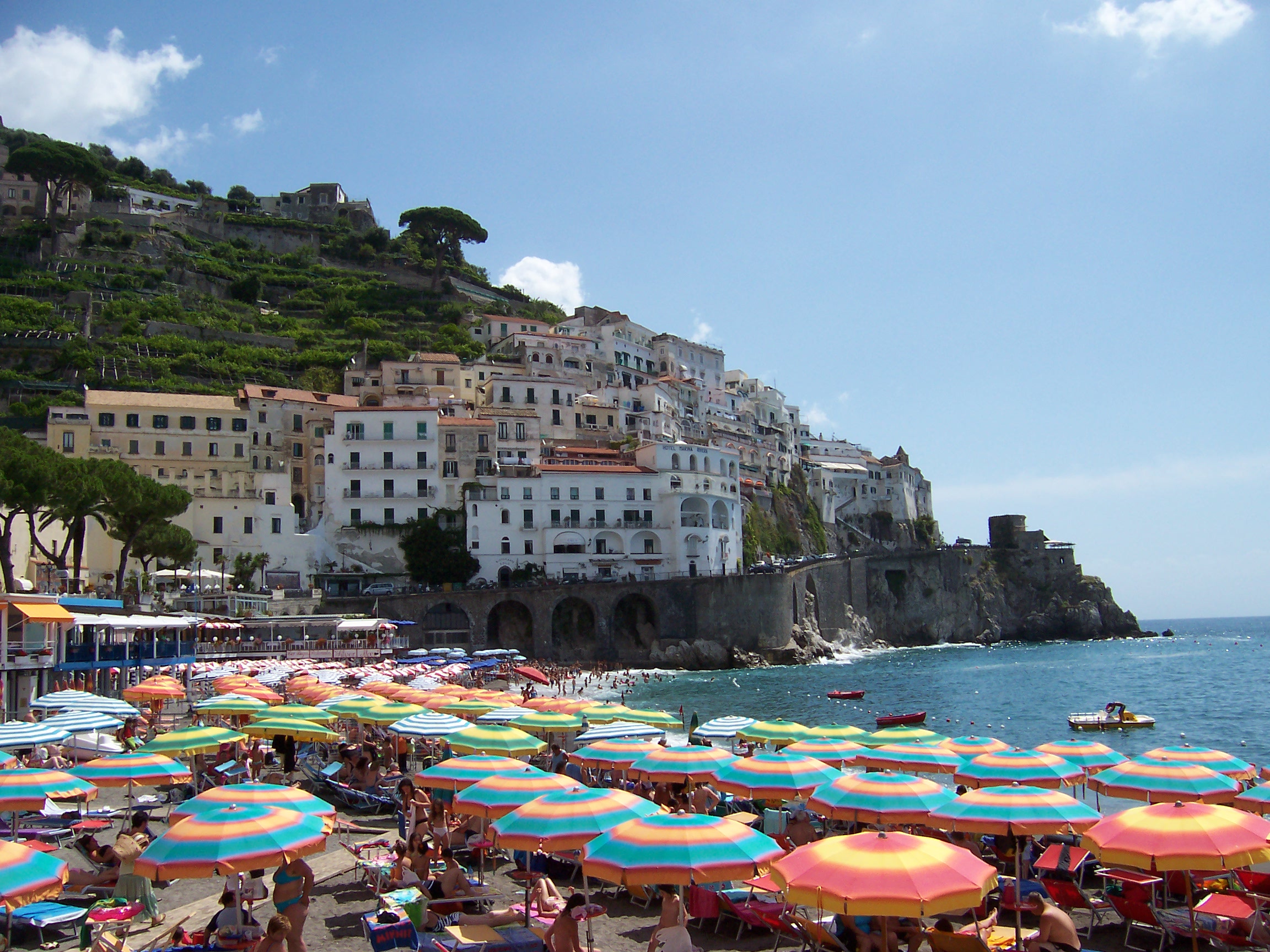Celebrated by 19th-century tourists as the most beautiful stretch of coast in the world, the beauty of the Amalfi Coast was already well known during antiquity, and its fame has not diminished in modern times. It is a magical landscape of dramatic cliffs overhanging a beautiful sea, interspersed with villages that appear to have grown from the underlying rocks. Here and there, where the mouth of a stream has created a natural harbor, a larger town has developed, as in the case of Amalfi, the queen of the Costiera. Its river valley allowed for the development of paper mills that produced paper for much of Europe during the Middle Ages and well into the Renaissance, while its harbor became the shipyard that fueled Amalfi's mighty political and commercial power.
The Amalfi Coast's unique views and plunging cliffs have inspired the works of many famous artists, writers, and musicians, from Giovanni Boccaccio to Richard Wagner, and its small towns and hamlets have been the refuge of many others, including Henrik Ibsen, Pablo Picasso, Rudolf Nureyev, and, more recently, Gore Vidal.
The most famous destination in Campania -- and indeed, one of the most popular in Italy -- the Amalfi Coast will enchant you with its dramatic coastline and picturesque villages. From Vietri sul Mare to the east -- a town famous for its ceramics and majolica -- to Piano di Sorrento to the west, the (sometimes harrowing) Amalfi Drive is home to leading resort towns (even though they're not exactly undiscovered): sophisticated Ravello (high above the sea), glitzy Positano (right on the water), and historic Amalfi (also on the sea). We also recommend going off the beaten path to explore lesser-known towns, all with a rich history and impressive views of the coast. East of Amalfi, you will find the fishing harbor of Cetara; the coastal villages of Maiori, Minori, and Atrani; and the inland (and, hence, upward) villages of Scala and Tramonti; west of Amalfi are the charming seaside villages of Conca dei Marini, Praiano, and Vettica Maggiore and the mountain villages of Agerola and Furore.
The Amalfi Coast is one of the most visited seaside destinations in the world, particularly during spring and summer, when each hamlet and village along this coast becomes the stage for art and cultural events, and the sweet evening air is pervaded by the scent of citrus flowers. In winter, everything is much quieter, as many places close down and the sea gets too chilly to swim in. You may have the place all to yourself in these colder months, but you'll miss much of the spirit it shows when in full bloom.
One word about transportation: Public transit is well developed here and is a way to make your vacation in this protected area more ecofriendly. In recent years, the government has put into place a number of initiatives to try and dissuade visitors from driving themselves along the Amalfi Coast (you'll do yourself a favor by reading this article before renting a car).









